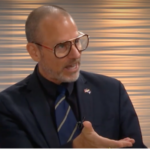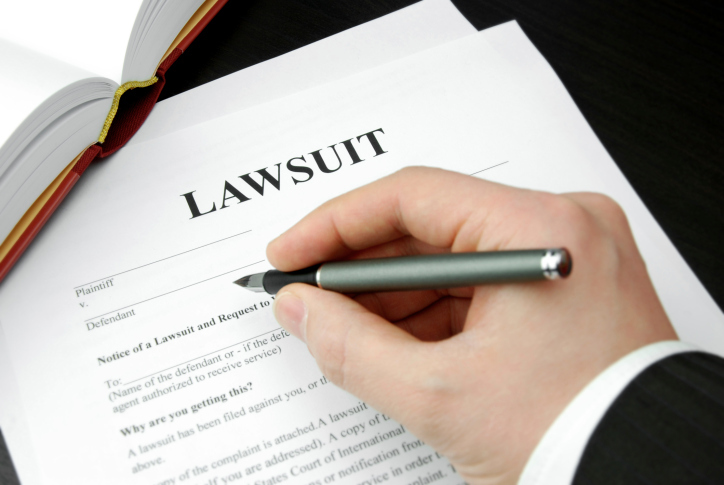A recent report by the National Center for Policy Analysis, Environmental Regulation Through Litigation, describes a new and disturbing approach to environmental regulation: sue-and-settle lawsuits.
Under sue-and-settle litigation, an increasingly common method of federal environmental rulemaking, an environmental lobbying group sues an agency–say, the Environmental Protection Agency (EPA). The agency settles the suit, leading to hundreds of billions of dollars in new regulations annually. The costs fall not on the parties to the lawsuit, but on states and regulated entities.
Ann Norman, author of the study and a senior research fellow at the National Center for Policy Analysis, writes, “These regulations run the gamut from dictating precisely how much sulphur is allowed in a gallon of gasoline to setting efficiency standards for microwaves.”
She adds, “the economic cost of regulation through litigation is enormous. Consider: From 2009 to 2013, federal agencies gave us $494 billion worth of final rules. And all of this occurs outside of the regular regulatory process which normally involves consultations with the state agencies and allows for public notice and comments.”
“The Department of the Interior and the EPA have used sue-and-settle agreements with environmental pressure groups for decades to evade the Administrative Procedures Act and evade or ignore congressional intent,” said Myron Ebell, director of energy and environment studies at the Competitive Enterprise Institute. “The Obama administration is setting new records for engaging in this type of collusion with special interests.”
EPA Losses Are EPA Gains A May 2013 report, Sue and Settle: Regulating Behind Closed Doors, by the U.S. Chamber of Commerce, also takes issue with sue-and-settle litigation. The study reports, “[b]etween 2009 and 2012, EPA chose not to defend itself in over 60 lawsuits from special interest advocacy groups” and “[t]hese cases resulted in settlement agreements and EPA publishing more than 100 new regulations.” Environmental groups are well-represented among the plaintiffs, as the figure accompanying this article shows.

George Mason University law professors Henry N. Butler and Nathaniel J. Harris noted in an October 2013 paper for the Harvard Journal of Law and Public Policy, sue-and-settle litigation undermines the longstanding balance between federal and state governments: “Federal environmental policy has long relied on the states to assist in the development and implementation of environmental regulations. Under this ‘cooperative federalism,’ states not only administer federal rules but also receive flexibility in setting standards and enforcement priorities.
“In recent years,” they continued, “environmental advocacy groups have increasingly succeeded in using a faux litigation strategy to effectively trample the statutory regulatory framework and to shut out the states from important policy decisions. In fact, this regulation by litigation is a clear affront to the statutory framework that envisions a cooperative federalism with active state involvement.”
How Sue-and-Settle Works The Chamber of Commerce study describes the typical sue-and-settle process as follows: (1) “A special interest group sues a federal agency to issue rules by a specific deadline,” (2) “The special interest group and federal agency enter into a private settlement agreement,” and (3) “The settlement is lodged in court; once finished, it becomes legally binding for the agency.”
Butler described the process as collusive: “EPA says, ‘go ahead, make my day and sue me!’ A friendly environmental group sues the EPA, and the EPA quickly settles. States have a difficult time participating in such regulatory decision-making.”
The Chamber of Commerce study says sue-and-settle “[s]ignificantly influences affected Federal agencies.” It continues, “Compliance with rules and other requirements of settlement agreements can cost tens to even hundreds of billions of dollars each year. … The public is kept in the dark, bypassing the normal rulemaking procedures necessary to create sound public policy.”
EPA’s approach is a “surrender of regulatory priority-making to green litigation groups,” said Competitive Enterprise Institute Senior Fellow William Yeatman. “This phenomenon, in turn, is engendered by the agency’s woeful performance meeting its statutory deadlines.”
He noted as an example, “Since 1994, EPA has missed 98 percent of its Clean Air deadlines (196 out of 200) for three core programs, by an average of five years. Unfortunately, EPA doesn’t appear to be interested in improving its performance.”
‘Cronyism, Pure and Simple’ Roy Cordato, vice president of the John Locke Foundation, said, “Sue-and-settle has nothing to do with justice, or even pollution, for that matter. It is essentially a collusive agreement between bureaucrats and special interests in an effort to advance an ideological agenda. It is cronyism, pure and simple.”
Ebell offered a short-term solution: “The Senate should vote on the sue-and-settle reform bill [HR 2804, which includes HR 1493, the Sunshine for Regulatory Decrees and Settlements Act] that was passed by the House in February.”
As a long-term solution, Cordato proposes returning courts to their traditional function: “There is a role for the courts in dealing with environmental issues, but it is in the area of tort and nuisance law.”
He continued, “Clearly, anyone who is damaged by someone else’s pollution and can demonstrate this in court invoking standard requirements of proof is entitled to relief–compensation, injunction, or both. “In other words,” he said, “the courts should be used to administer justice for actual victims of pollution.”
D. Brady Nelson ([email protected]) is a Washington, DC-based economist, writer, and speaker from Brisbane, Australia and Milwaukee, Wisconsin.





